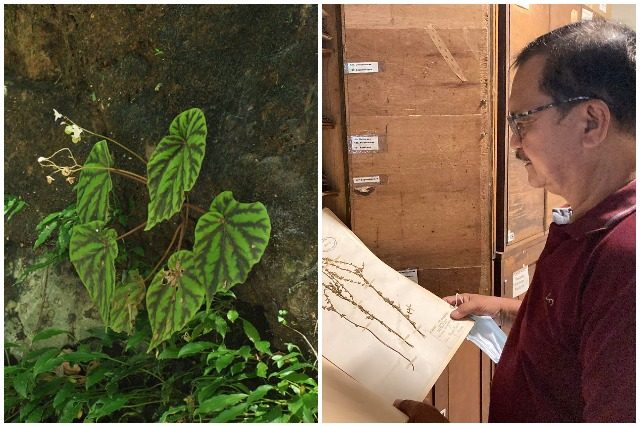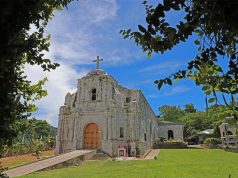
A local and endangered plant in the Philippines is named after a renowned curator, according to the National Museum of the Philippines.
The endemic plant with the scientific name Begonia titoevangelistae was named after Dr. Luisito “Tito” Evangelista, the curator of the country’s Botany and National Herbarium Division.
The National Museum shared this trivia in a Facebook post on April 14 in line with the observance of the coming Earth Day on April 22.
This year’s theme is “Restore our Earth.”
In its post, the museum noted that the plant is endemic to Catanduanes and is critically endangered. Photos of the plant and Evangelista were also provided in the post.
“Do you know that you can name a plant after someone? Let’s look at Begonia titoevangelistae, a plant species named after a curator from your #NationalMuseumPH,” read the post.
“Begonia titoevangelistae is an endemic and critically endangered plant from Catanduanes. The name Begonia titoevangelistae is a scientific name. It is a formal botanical name that is accepted worldwide. Most of the time, the use of local names of plants creates confusion so, it is better to have one universally accepted formal name,” it added.
Scientific names should always be italicized, the museum explained. A scientific name comprises the first word or the genus name and the second word or the specific epithet.
“Although social media platforms such as Facebook won’t usually allow words to be italicized, the proper way to digitally put scientific name is to make the first word (or the genus name) and the second word (or the specific epithet) italicized. The first letter of the genus name is always capitalized and is written first while the specific epithet follows the genus name and is not capitalized,” it said.
In the link to the study attached, it was stated that the plant was discovered in 2016 by a group of scientists at the Nahulugan Falls, Gigmoto, Catanduanes Island.
The scientists described that its physical features resemble another plant called Begonia neopurpurea.
However, it has more distinctive “variegated leaves where the veins and midrib are dark green to almost black contrasting with light green interveins in the adaxial surface.”
“Based on International Union for the Conservation of Nature red list criteria, B. titoevangelistae was assessed to be critically endangered, since it consists of one population with 300 individuals on a 100 m area around the waterfalls, which is being developed into a tourist spot,” read the abstract of the study.
Meet Evangelista and other curators
Evangelista, who also teaches at the Philippine National University, has worked with the national museum for nearly three decades.
His contributions include the management of the Philippine National Herbarium collection.
His legacy now includes having a local plant named after him.
Ahead of Earth Day, the national museum gives the public an opportunity to virtually meet and learn from the National Museum curators such as Evangelista through its program called “Ask a Curator.”
To reserve a slot, users may fill up and submit the registration form through this form.
“For the first time since the pandemic, you will have the chance to virtually meet our curators in the National Museum of Natural History as they respond to your inquiries on how they manage our collections, prepare our exhibitions, and promote our galleries while we adapt to the new normal setting,” the form read.









